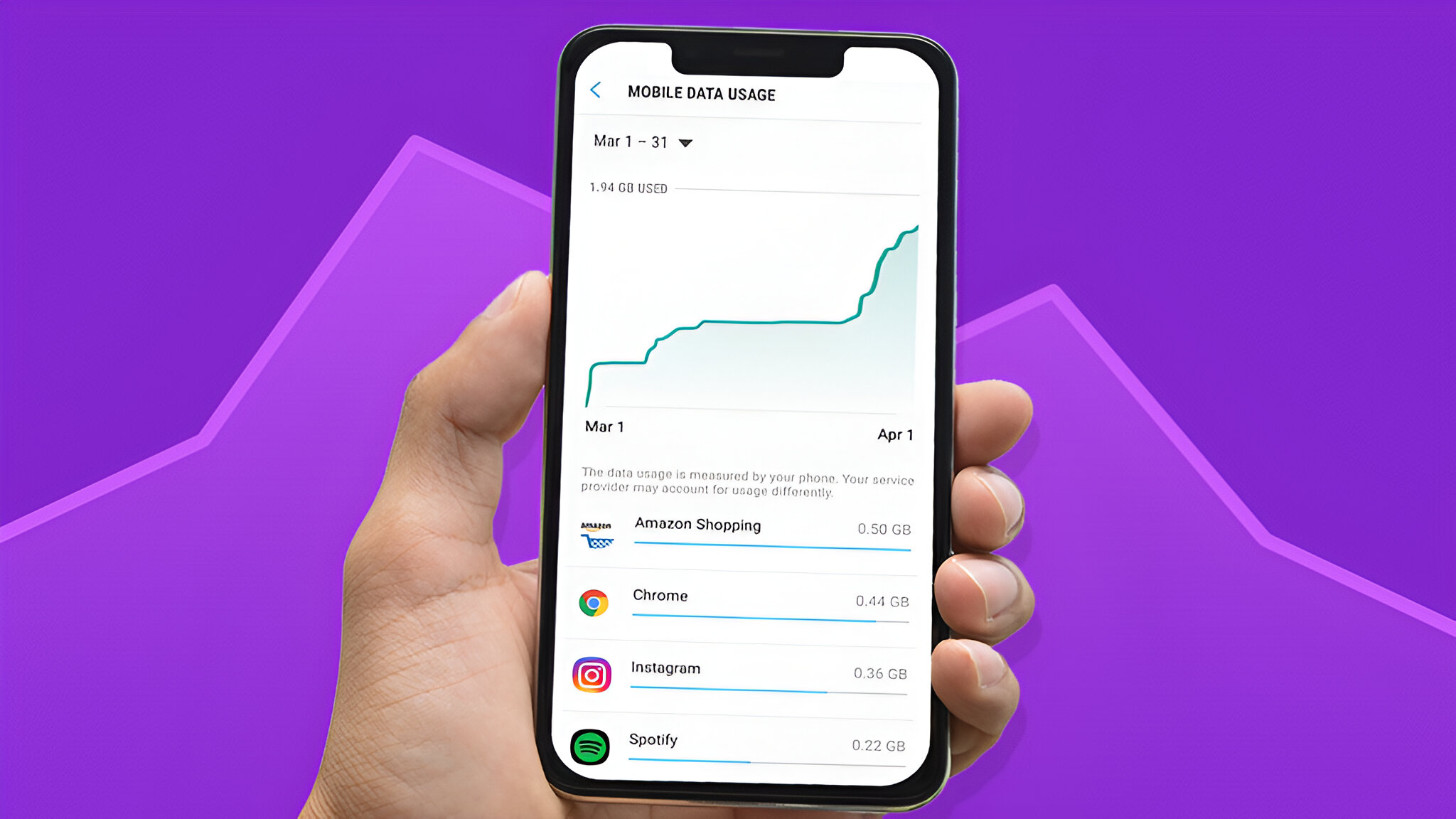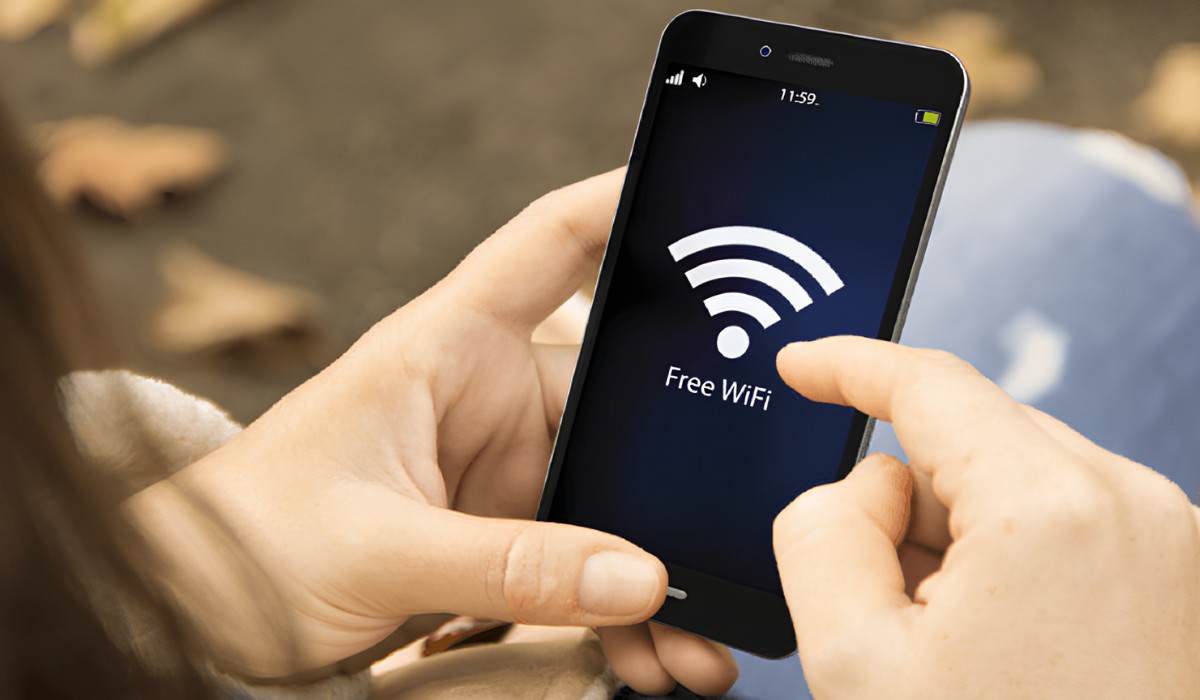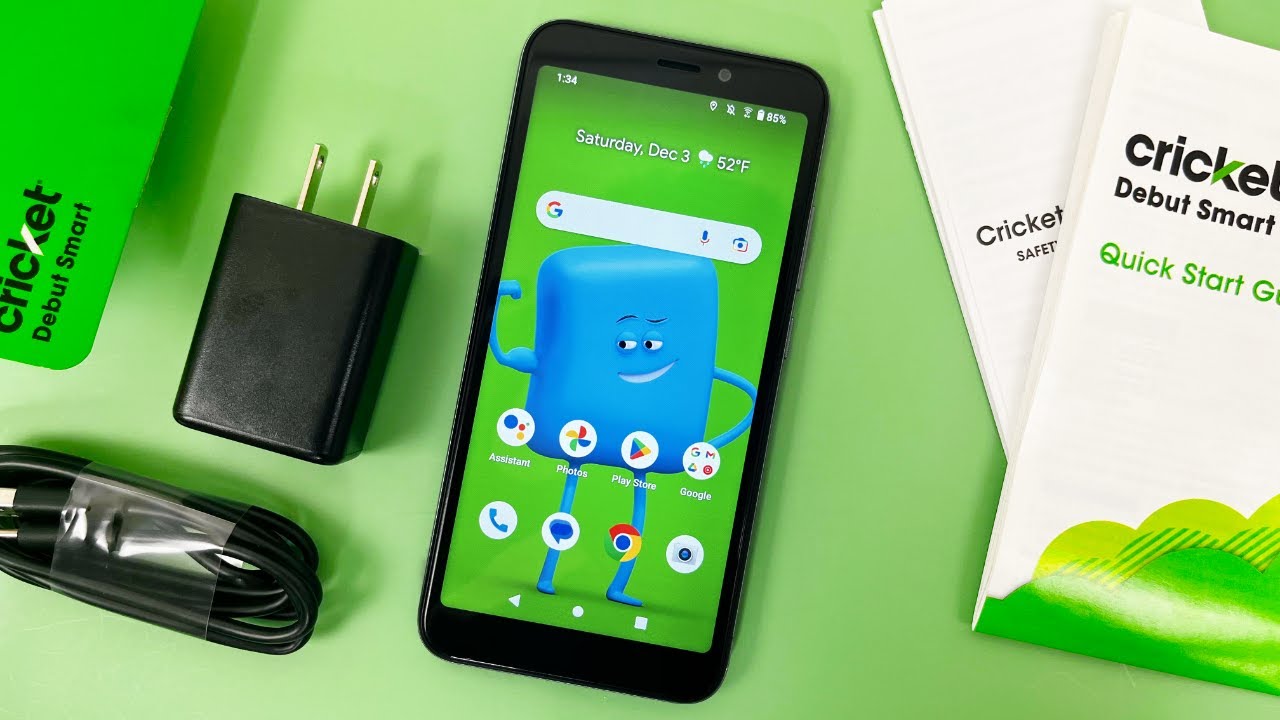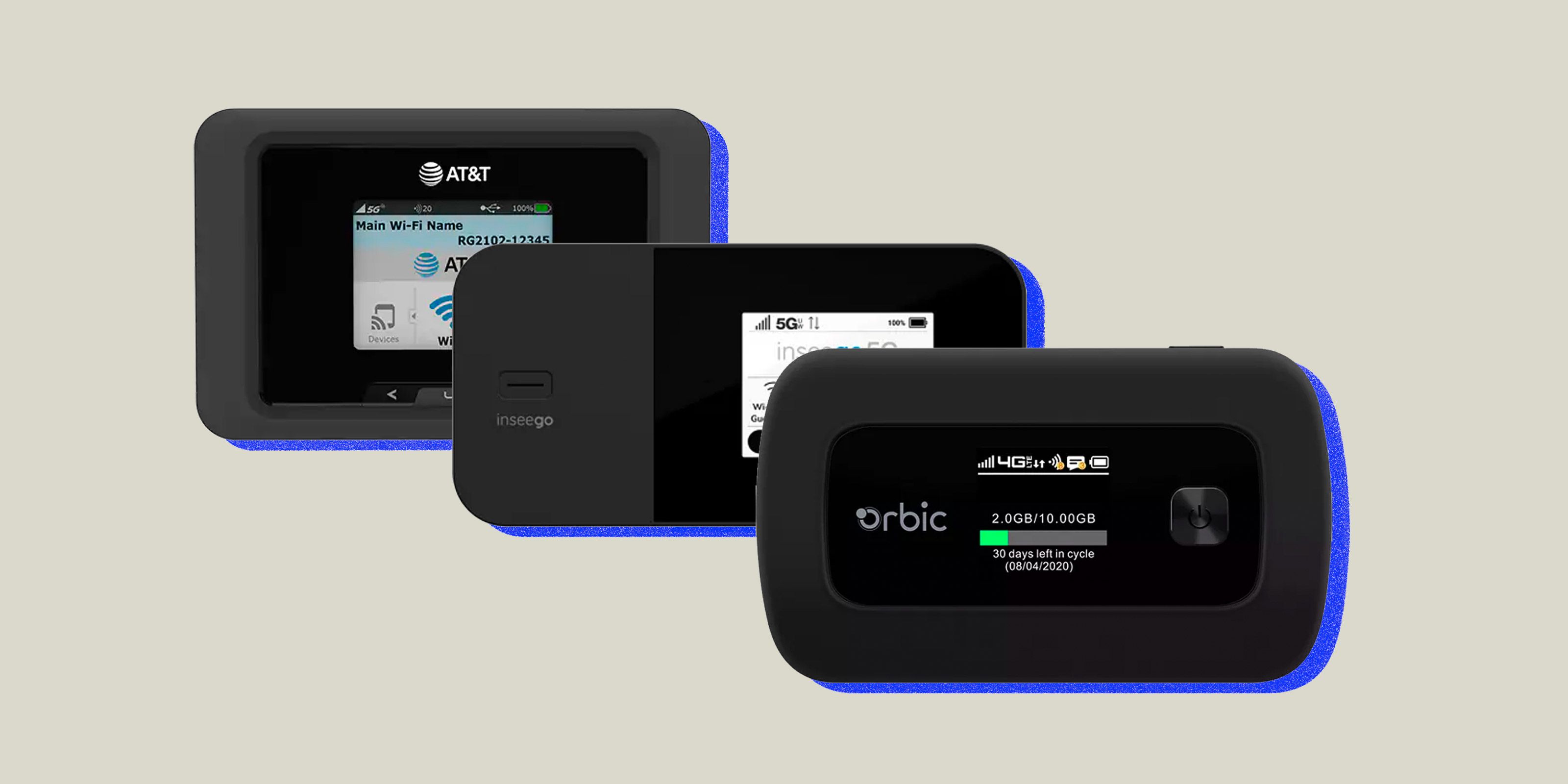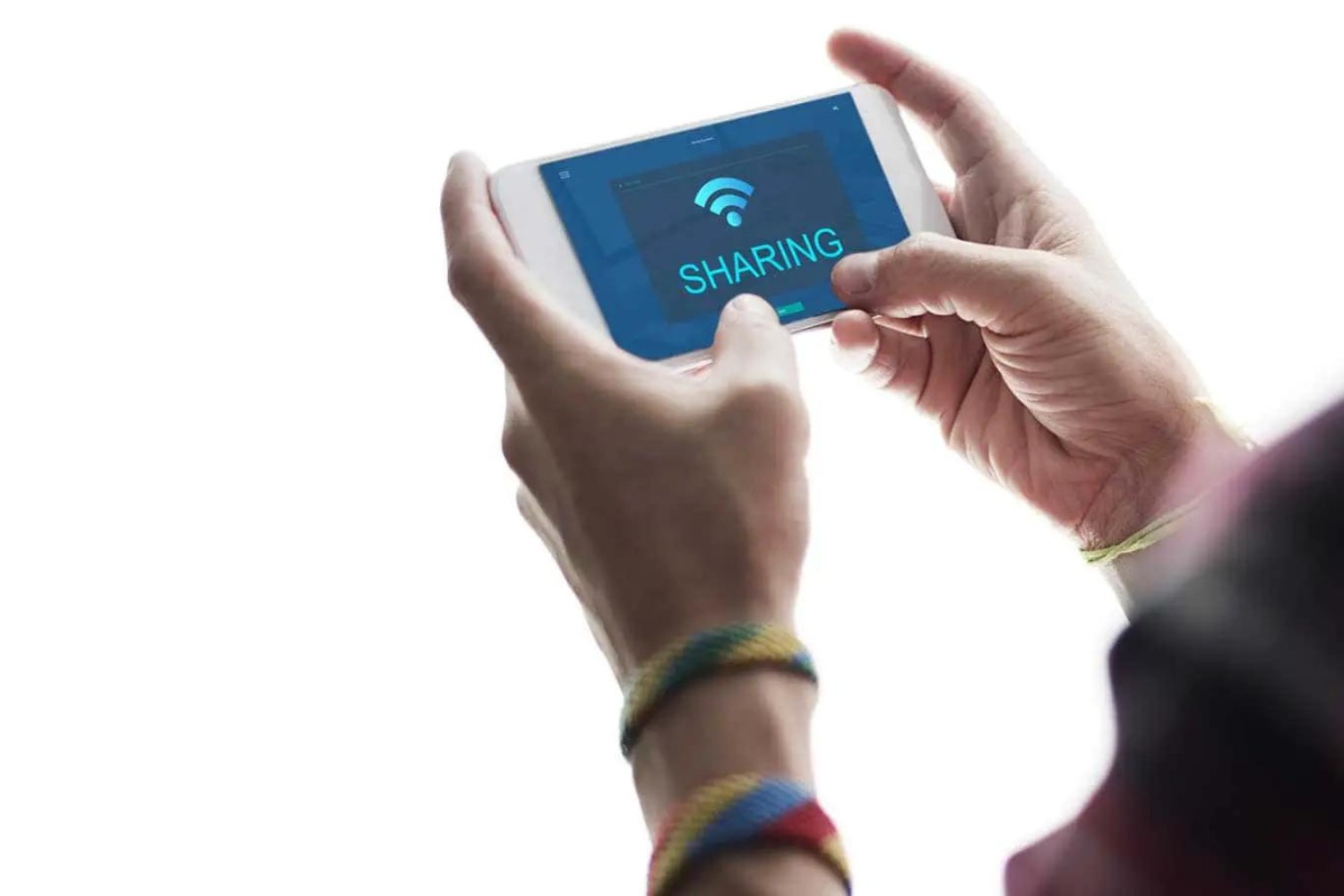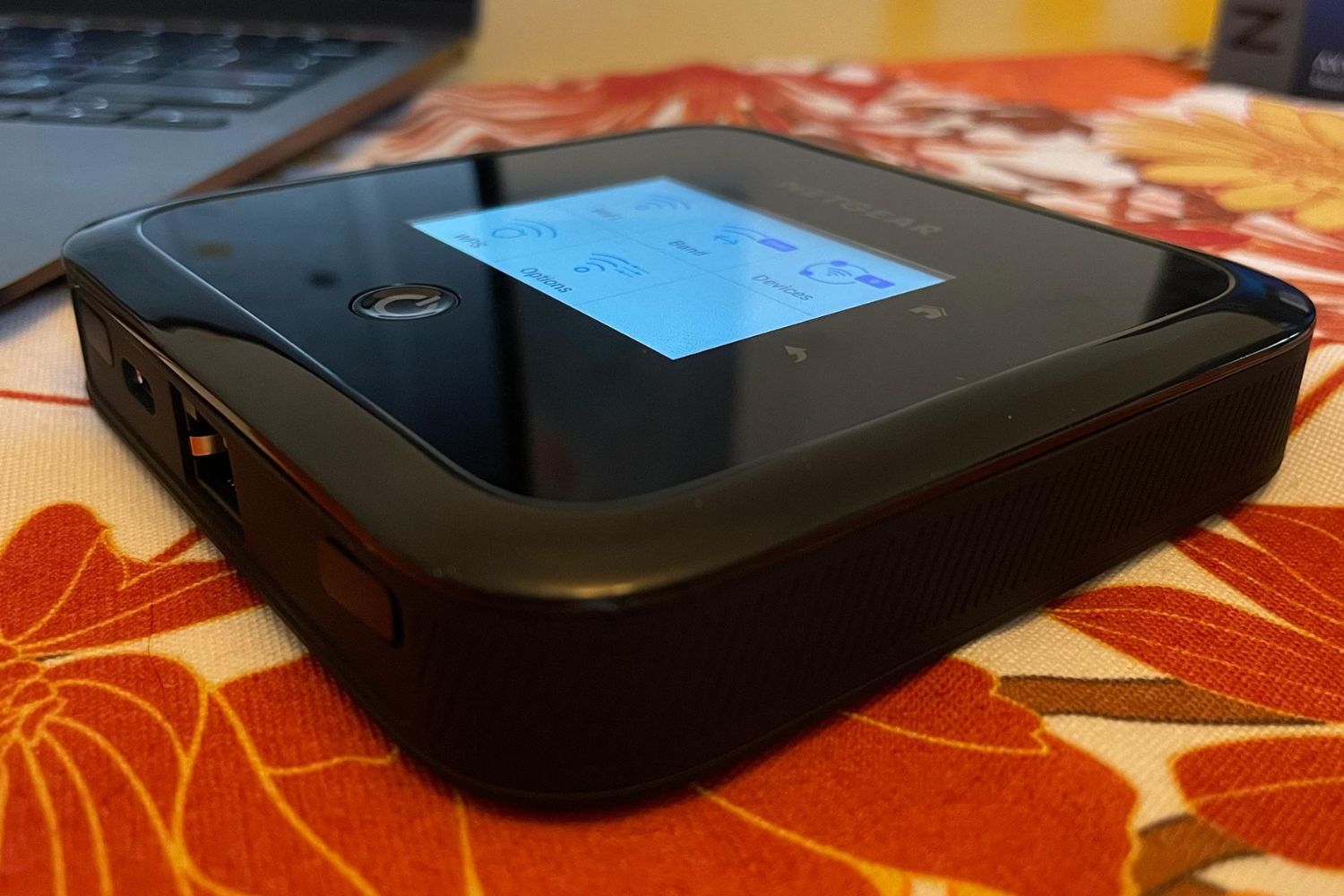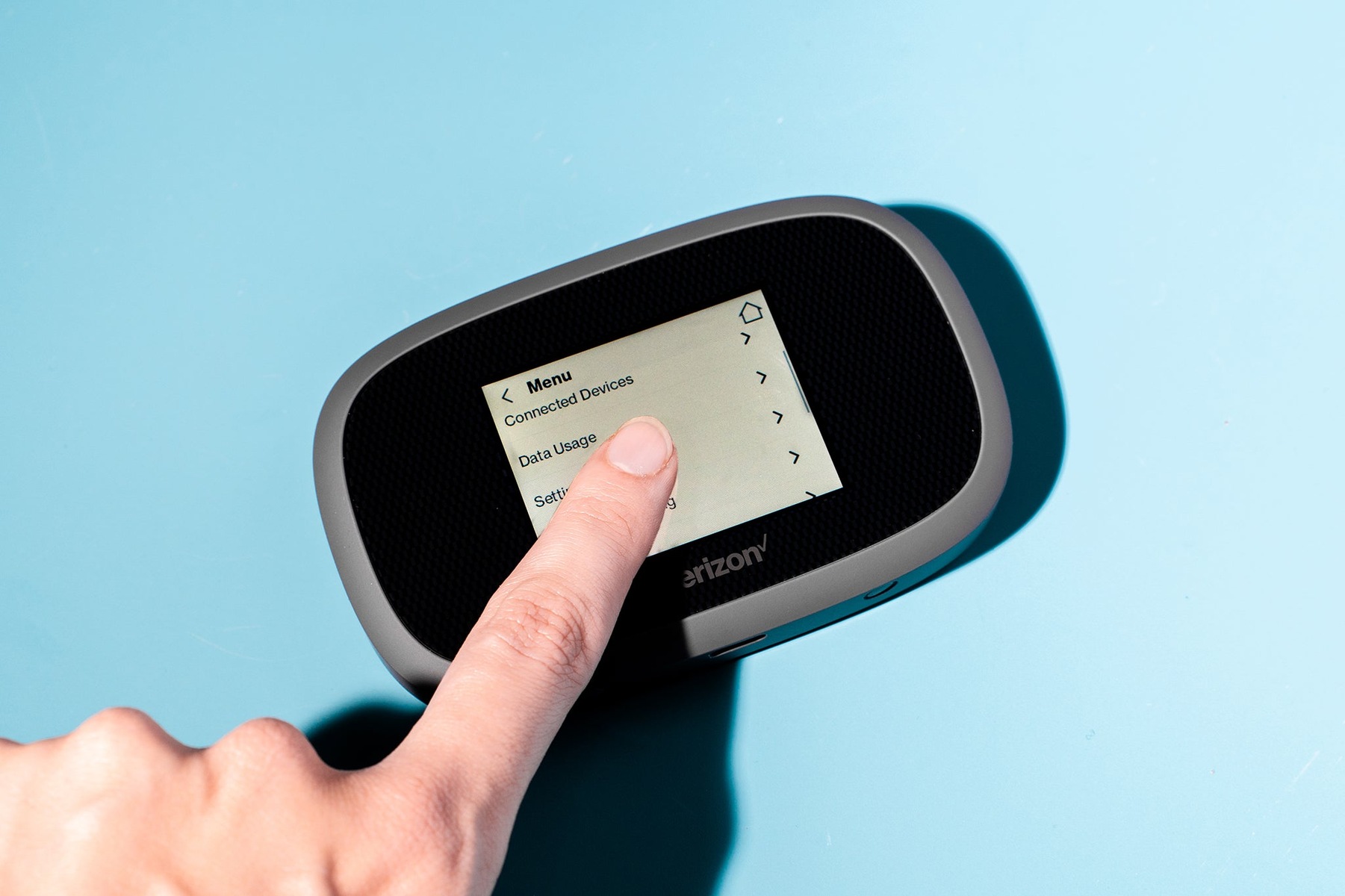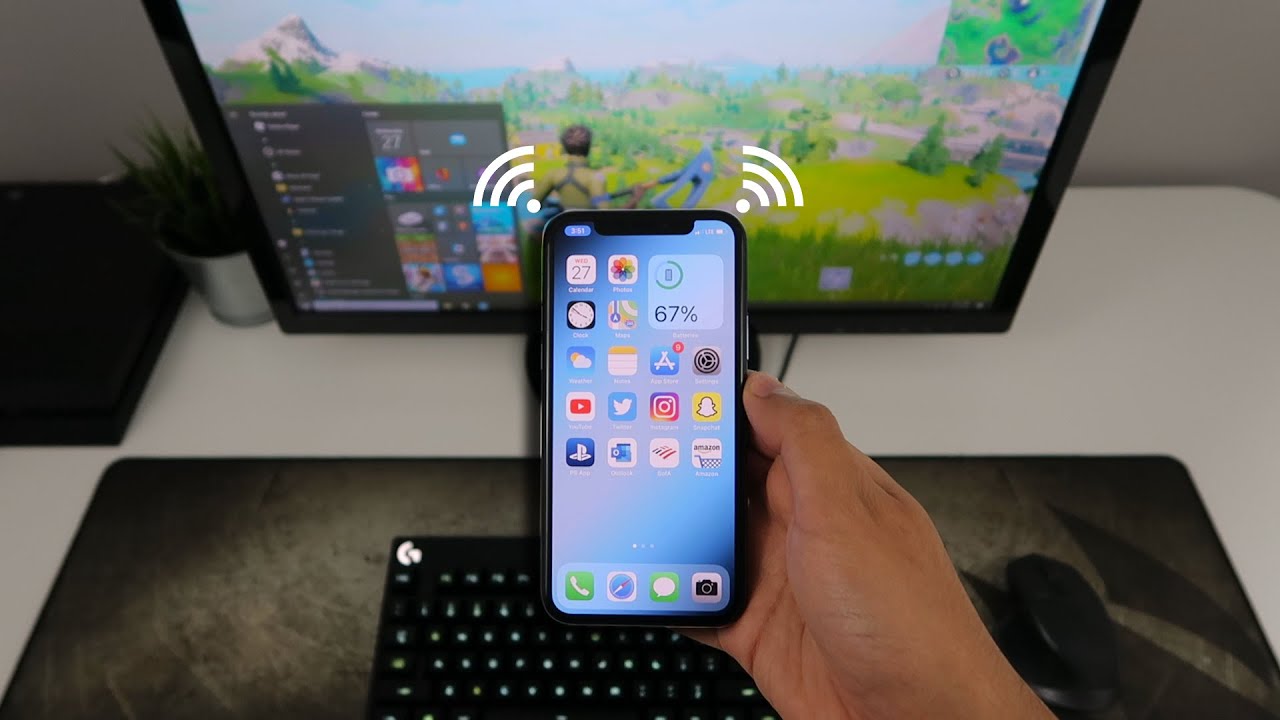Introduction
In today's fast-paced world, staying connected is a top priority for many people. Whether it's for work, school, or personal use, having a reliable internet connection on the go is essential. This is where mobile hotspots come into play. These nifty devices allow users to access the internet from virtually anywhere, providing a convenient solution for those in need of connectivity while on the move.
However, with the convenience of mobile hotspots comes the need for efficient monitoring of data usage. Understanding how to monitor and manage data consumption on a mobile hotspot is crucial for several reasons. First and foremost, it helps users avoid unexpected overage charges from their service providers. By keeping a close eye on data usage, individuals can ensure that they stay within their plan limits, avoiding any additional costs that may arise from exceeding their data allocation.
Moreover, monitoring mobile hotspot usage allows users to optimize their data allocation, ensuring that they have sufficient data for their needs without wastage. This is particularly important for individuals with limited data plans or those who frequently rely on their mobile hotspots for internet access.
In this article, we will explore some quick and effective tips for monitoring mobile hotspot usage. By implementing these strategies, users can gain better control over their data consumption, maximize their data allocation, and make the most out of their mobile hotspot experience. Whether you're a professional constantly on the move, a student needing internet access for studies, or simply someone who values connectivity wherever they go, these tips will help you manage your mobile hotspot usage with ease and confidence.
Set Data Limits
Setting data limits on your mobile hotspot is a proactive approach to managing data usage. By establishing predefined limits, you can effectively control the amount of data that is consumed, thereby avoiding unexpected overages and optimizing your data allocation. Here are some key steps to set data limits on your mobile hotspot:
1. Understand Your Data Plan
Before configuring data limits, it's crucial to have a clear understanding of your data plan. Familiarize yourself with the specifics of your plan, including the allocated data volume, any applicable throttling policies, and the consequences of exceeding your data allowance. By being well-informed about your plan, you can make informed decisions when setting data limits.
2. Access Hotspot Settings
Access the settings of your mobile hotspot device to configure data limits. This can typically be done through the device's web interface or dedicated mobile app. Look for options related to data management, usage control, or data limits within the settings menu.
3. Set Data Thresholds
Once within the hotspot settings, you can establish data thresholds that align with your data plan. Consider setting alerts or warnings to notify you when you are approaching your data limit. This proactive measure can serve as a timely reminder to adjust your usage or consider alternative connectivity options if necessary.
4. Utilize Data Management Tools
Many modern mobile hotspot devices offer advanced data management tools that allow users to set specific data limits for different time periods, devices, or applications. Take advantage of these features to tailor your data limits according to your usage patterns and preferences.
5. Regularly Review and Adjust
It's important to periodically review your data usage patterns and adjust your data limits accordingly. Factors such as changes in usage habits, new applications, or additional connected devices may warrant a reevaluation of your data limits to ensure they remain effective in managing your data consumption.
By proactively setting data limits on your mobile hotspot, you can take control of your data usage and minimize the risk of exceeding your plan's allocation. This proactive approach empowers you to make informed decisions about your connectivity while ensuring that you maximize the value of your data plan.
Track Data Usage
Tracking data usage on your mobile hotspot is a fundamental aspect of effectively managing your connectivity. By monitoring your data consumption, you can gain valuable insights into your usage patterns, identify potential sources of high data consumption, and make informed decisions to optimize your data allocation. Here's a detailed look at how you can track data usage on your mobile hotspot:
1. Access Device Usage Statistics
Most mobile hotspot devices provide built-in features that allow users to view detailed usage statistics. Access the device's settings or web interface to review comprehensive data usage reports. These reports typically include information such as total data consumed, usage trends over specific time periods, and breakdowns of data usage by connected devices or applications.
2. Set Up Usage Alerts
Take advantage of usage alert functionalities offered by your mobile hotspot device or service provider. Configure alerts to notify you when you reach predefined data thresholds. These alerts serve as proactive indicators, prompting you to monitor your usage closely and make necessary adjustments to avoid exceeding your data limits.
3. Monitor Real-Time Usage
Some mobile hotspot devices offer real-time data usage monitoring, allowing users to track their consumption as it occurs. By leveraging this feature, you can actively monitor the impact of various activities on your data usage, such as streaming, downloads, or online gaming. Real-time monitoring empowers you to make immediate decisions to regulate your usage and avoid unnecessary data depletion.
4. Analyze Usage Patterns
Regularly analyze your data usage patterns to identify trends and recurring high-consumption periods. Look for correlations between specific activities or connected devices and spikes in data usage. This analysis can help you pinpoint areas where data consumption can be optimized, whether through adjusting usage habits, implementing data-saving strategies, or exploring alternative connectivity options for data-intensive tasks.
5. Utilize Third-Party Apps
Consider using third-party mobile apps designed for tracking data usage. These apps often offer enhanced features, such as detailed breakdowns of data usage by application, customizable usage alerts, and historical usage trends. By integrating such apps into your data monitoring toolkit, you can gain a more granular understanding of your data consumption and take proactive measures to manage it effectively.
By actively tracking your data usage on your mobile hotspot, you can gain valuable insights that enable you to make informed decisions about your connectivity. Whether it's identifying data-intensive activities, optimizing usage patterns, or ensuring that you stay within your data limits, proactive data tracking empowers you to take control of your connectivity experience.
Use a Monitoring App
Utilizing a dedicated monitoring app is a highly effective strategy for gaining comprehensive insights into your mobile hotspot usage. These apps are specifically designed to provide detailed data usage analytics, real-time monitoring capabilities, and customizable alerts, empowering users to proactively manage their connectivity. Here's a closer look at the benefits and practical steps involved in using a monitoring app for your mobile hotspot:
Benefits of Monitoring Apps
Monitoring apps offer a range of benefits that enhance the visibility and control of your data usage. They provide real-time visibility into data consumption, allowing you to track usage patterns, identify data-intensive activities, and monitor the impact of connected devices and applications on your data allocation. Additionally, these apps often feature customizable usage alerts, enabling you to receive timely notifications when approaching data thresholds, thereby preventing unexpected overages.
Steps to Implement a Monitoring App
-
Research and Select an App: Begin by exploring the available monitoring apps compatible with your mobile hotspot device. Look for apps that offer intuitive interfaces, comprehensive usage reports, and customizable alert settings. Consider user reviews and ratings to gauge the app's reliability and effectiveness.
-
Download and Install: Once you've identified a suitable monitoring app, download and install it on your mobile device. Many monitoring apps are available through official app stores, ensuring ease of access and installation.
-
Configure App Settings: Upon installing the app, take the time to configure its settings according to your preferences and data management goals. This may include setting up personalized usage alerts, specifying data thresholds, and customizing the display of usage analytics to align with your monitoring needs.
-
Real-Time Monitoring: Leverage the real-time monitoring features offered by the app to actively track your data usage as it occurs. Keep an eye on the app's dashboard to gain immediate insights into your consumption patterns, allowing you to make informed decisions to regulate your usage in real time.
-
Utilize Usage Reports: Explore the usage reports provided by the monitoring app to gain a comprehensive understanding of your data consumption over specific time periods. Analyze the breakdown of data usage by devices, applications, and activities, enabling you to identify areas for optimization and informed adjustments to your connectivity habits.
By incorporating a monitoring app into your data management toolkit, you can harness advanced analytics and real-time visibility to take proactive control of your mobile hotspot usage. These apps serve as invaluable tools for optimizing your data allocation, avoiding overages, and ensuring a seamless and efficient connectivity experience.
Check Connected Devices
Monitoring the devices connected to your mobile hotspot is a crucial aspect of managing data usage effectively. By understanding the devices that are utilizing your hotspot's connectivity, you can gain insights into the distribution of data consumption, identify potential sources of high usage, and ensure that unauthorized devices are not siphoning off your data allocation. Here's a detailed exploration of the steps involved in checking connected devices and the benefits it offers:
Visibility into Connected Devices
Accessing the connected devices list on your mobile hotspot provides valuable visibility into the devices utilizing your hotspot's connectivity. This feature allows you to view a comprehensive list of connected devices, including smartphones, tablets, laptops, and other Wi-Fi-enabled gadgets. By reviewing this list, you can ascertain the number of devices utilizing your hotspot at any given time, enabling you to gauge the overall demand on your data allocation.
Identification of Data-Intensive Devices
Checking the connected devices list empowers you to identify devices that may be contributing significantly to your data consumption. By examining the list, you can pinpoint devices that exhibit high data usage patterns, potentially due to data-intensive activities such as video streaming, large file downloads, or online gaming. This insight allows you to address excessive data consumption at the device level, whether through communication with the respective users or by implementing usage restrictions as necessary.
Security and Unauthorized Access Prevention
Monitoring connected devices is essential for ensuring the security of your mobile hotspot and preventing unauthorized access. By regularly reviewing the list of connected devices, you can promptly identify any unfamiliar or unauthorized devices that may have gained access to your hotspot. In such instances, you can take immediate action to secure your hotspot by removing unauthorized devices and implementing security measures to prevent future unauthorized access attempts.
Optimization of Device-Specific Settings
Checking connected devices facilitates the optimization of device-specific settings to regulate data usage. Many modern mobile hotspots offer the ability to customize settings on a per-device basis, allowing users to implement data usage restrictions, prioritize connectivity for specific devices, or configure device-specific data thresholds. By leveraging these capabilities, you can tailor the connectivity experience for individual devices, ensuring that data allocation is optimized according to specific usage requirements.
Proactive Data Management
By regularly monitoring the connected devices list, you can engage in proactive data management to ensure efficient utilization of your data allocation. This proactive approach enables you to identify and address potential data consumption issues promptly, optimize connectivity settings for individual devices, and maintain control over the distribution of data usage across connected gadgets.
Incorporating the practice of checking connected devices into your data management routine empowers you to gain valuable insights, optimize connectivity settings, and ensure the security of your mobile hotspot. By understanding the devices utilizing your hotspot's connectivity and taking proactive measures to manage their impact on data usage, you can enhance the efficiency and control of your mobile connectivity experience.
Monitor Battery Usage
In addition to monitoring data usage, paying attention to the battery usage of your mobile hotspot is essential for ensuring uninterrupted connectivity. The battery life of your hotspot device directly impacts its ability to provide reliable internet access while on the go. By actively monitoring and managing battery usage, you can optimize the longevity of your device's battery, thereby enhancing its overall performance and your connectivity experience.
Here are some key considerations and strategies for effectively monitoring battery usage on your mobile hotspot:
-
Understanding Battery Capacity: Begin by familiarizing yourself with the battery capacity and specifications of your mobile hotspot device. This includes knowing the typical duration of battery life under various usage scenarios and the factors that can impact battery consumption. Understanding the battery capacity empowers you to make informed decisions about managing its usage effectively.
-
Battery Usage Statistics: Many mobile hotspot devices provide built-in features that allow users to access battery usage statistics. These statistics offer insights into the rate of battery consumption over specific time periods and under varying usage conditions. Accessing these statistics enables you to gauge the impact of different activities and connectivity demands on the device's battery, thereby informing your usage habits.
-
Optimizing Power-Saving Settings: Explore the power-saving settings available on your mobile hotspot device. These settings often include options to conserve battery life by adjusting connectivity parameters, managing idle time, or implementing automatic power-saving modes. By leveraging these settings, you can optimize the device's power consumption without compromising connectivity performance.
-
Managing Connected Devices: The number and activity of connected devices can influence the battery usage of your mobile hotspot. Monitoring the list of connected devices and their respective data demands allows you to regulate the overall strain on the device's battery. Proactively managing connected devices can contribute to more efficient battery usage and prolonged connectivity.
-
Regular Charging and Maintenance: Establish a routine for regular charging and maintenance of your mobile hotspot device. Adhering to manufacturer-recommended charging practices and ensuring that the device's battery is adequately maintained can contribute to sustained battery performance. Additionally, keeping the device's firmware and software up to date can optimize battery efficiency.
-
Backup Power Options: Consider having backup power options available for your mobile hotspot, especially when extended periods of connectivity are essential. This may include portable power banks or car chargers that provide supplementary power to the device when traditional charging sources are unavailable.
By actively monitoring battery usage and implementing proactive measures to optimize power consumption, you can ensure that your mobile hotspot device remains reliable and functional, providing uninterrupted connectivity when you need it most. Effectively managing battery usage contributes to a seamless and dependable connectivity experience, allowing you to make the most of your mobile hotspot's capabilities.
Conclusion
In conclusion, effectively monitoring and managing mobile hotspot usage is essential for individuals who rely on seamless connectivity while on the go. By implementing the quick tips outlined in this article, users can take proactive control of their data consumption, optimize their connectivity experience, and avoid unexpected overage charges. From setting data limits to monitoring battery usage, each strategy plays a crucial role in ensuring efficient and reliable connectivity through a mobile hotspot.
By setting data limits, users can establish predefined thresholds that align with their data plans, empowering them to avoid exceeding their allocated data volume while optimizing their usage. Understanding the specifics of their data plans and leveraging advanced data management tools enables users to take charge of their data consumption with confidence.
Tracking data usage provides valuable insights into consumption patterns, allowing users to identify data-intensive activities, monitor real-time usage, and make informed decisions to regulate their connectivity. The utilization of dedicated monitoring apps further enhances visibility and control, offering advanced analytics and customizable alerts to proactively manage data usage.
Checking connected devices is instrumental in understanding the distribution of data consumption and ensuring the security of the mobile hotspot. By monitoring connected devices, users can identify potential sources of high usage, optimize device-specific settings, and engage in proactive data management to maintain control over their connectivity.
Furthermore, monitoring battery usage is vital for optimizing the longevity and performance of the mobile hotspot device. By understanding battery capacity, accessing usage statistics, and implementing power-saving settings, users can ensure uninterrupted connectivity while effectively managing battery consumption.
Incorporating these strategies into their mobile hotspot usage routine empowers individuals to maximize the value of their data plans, avoid unnecessary overages, and maintain a reliable and efficient connectivity experience. Whether for professional, educational, or personal use, the ability to monitor and manage mobile hotspot usage effectively is a valuable skill that contributes to seamless connectivity and peace of mind while on the move.







